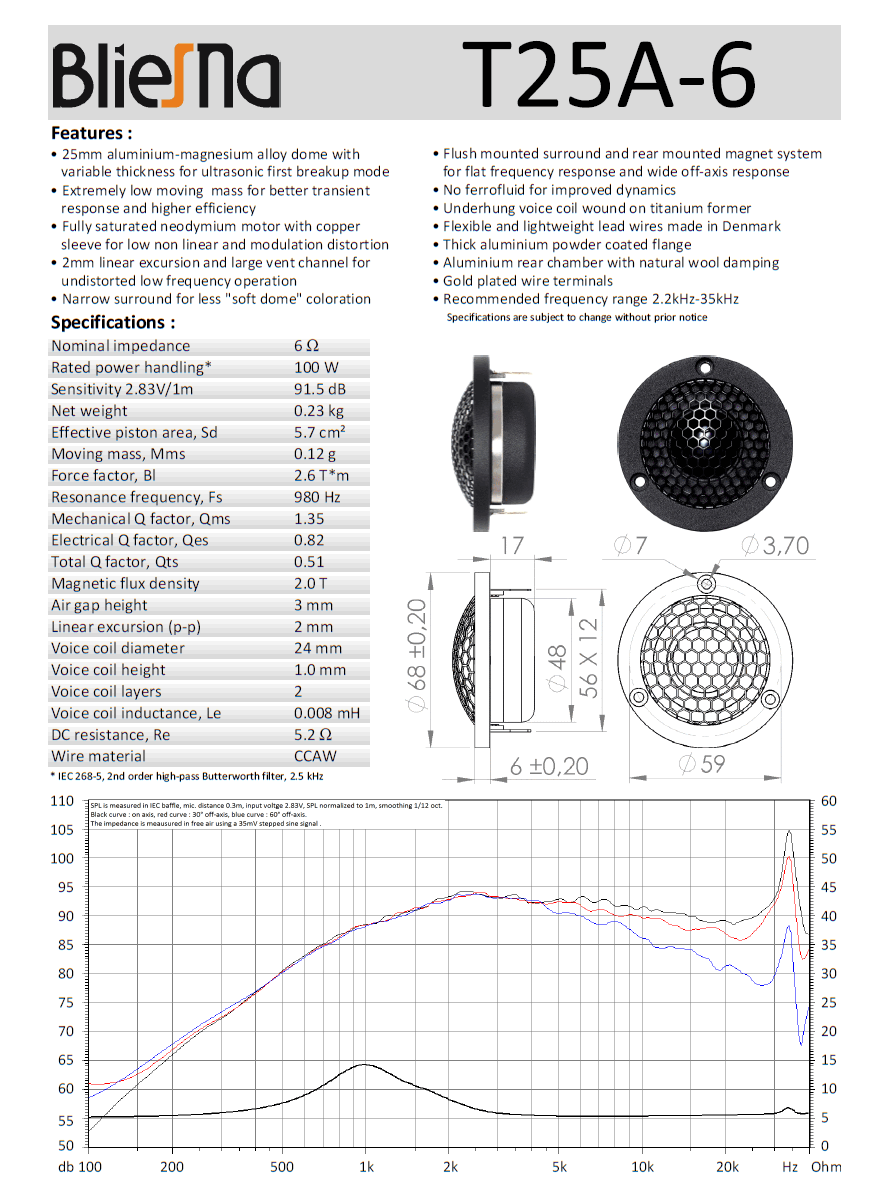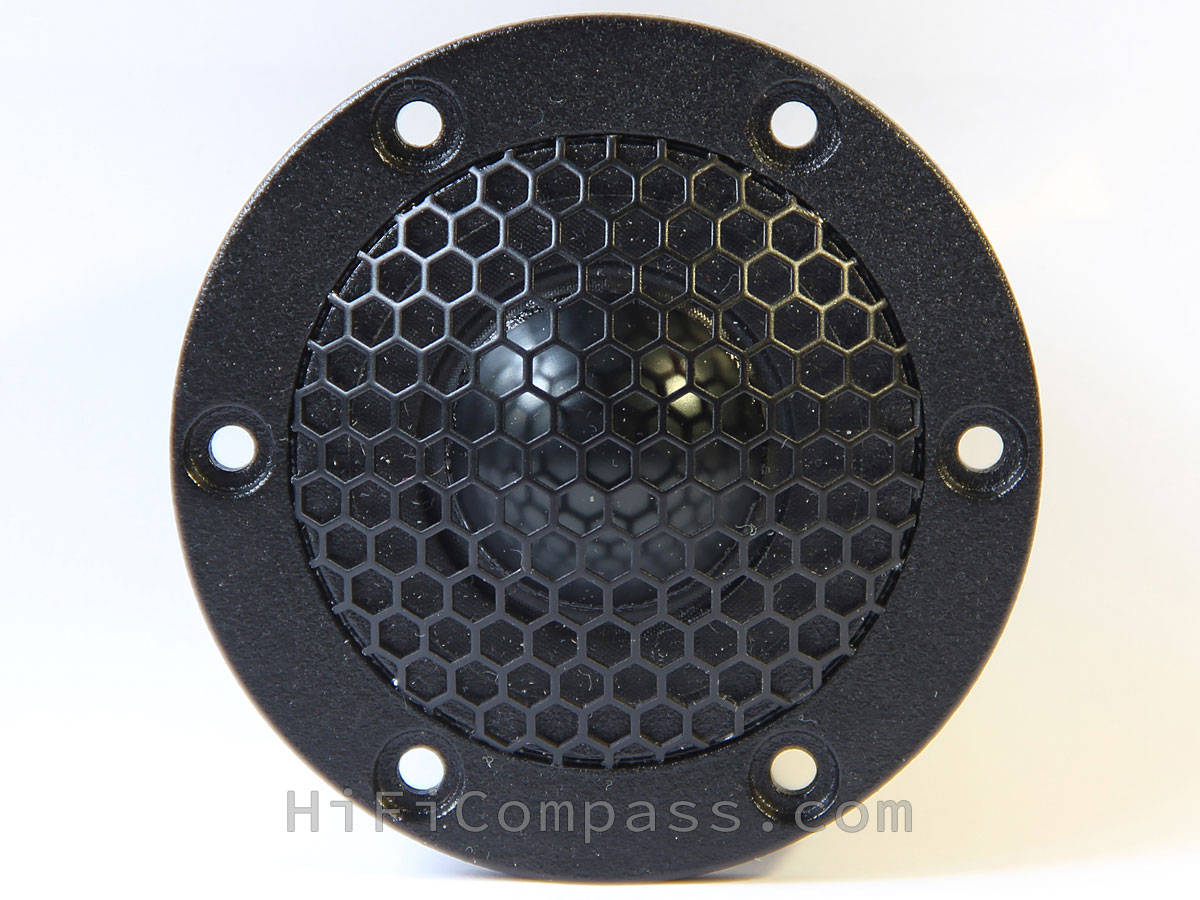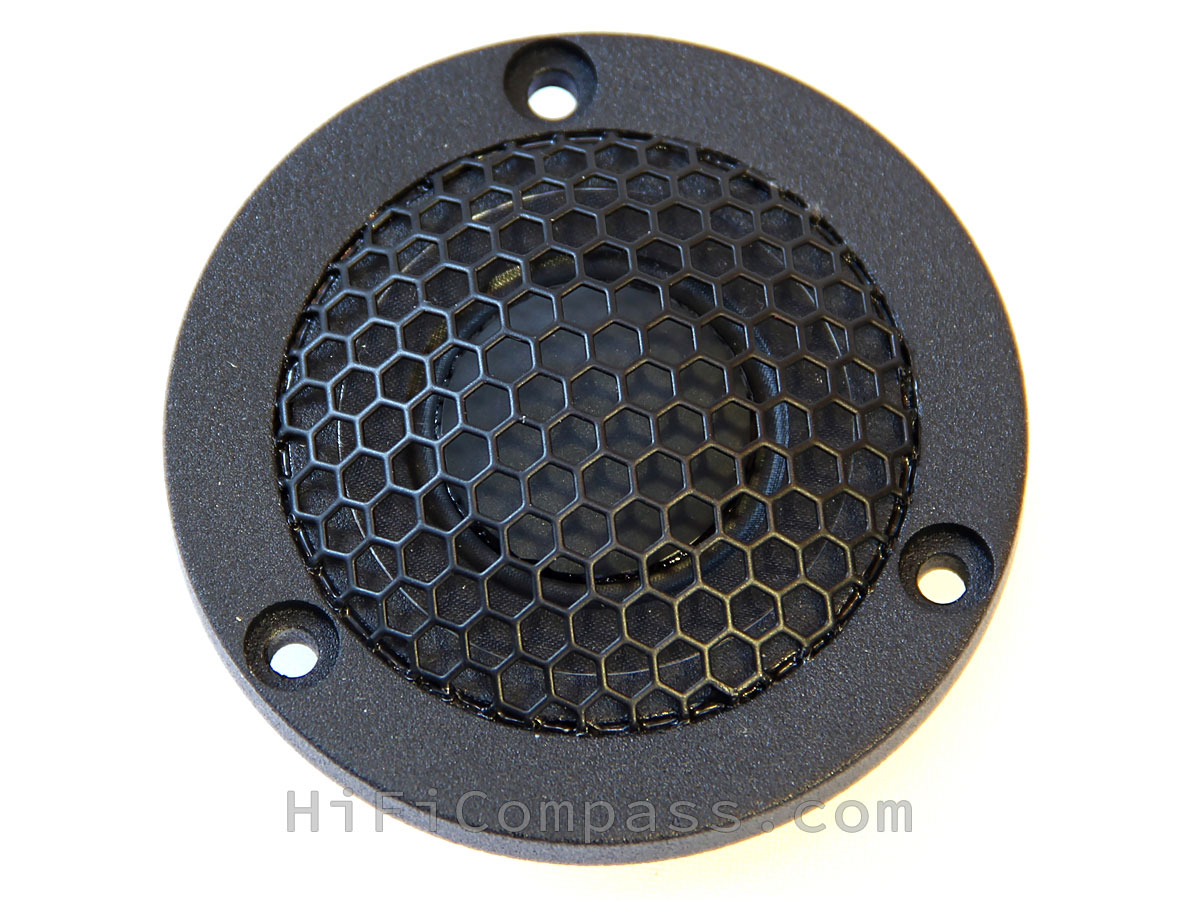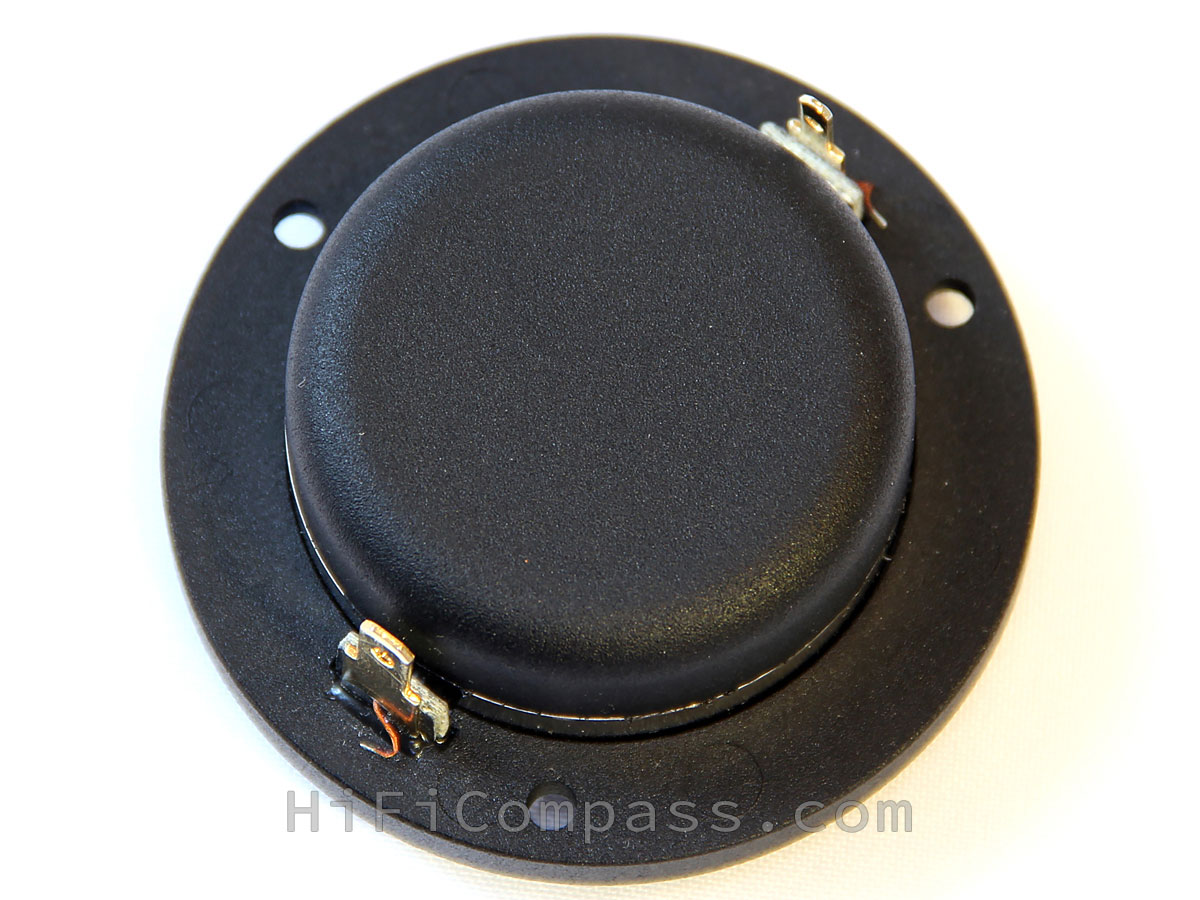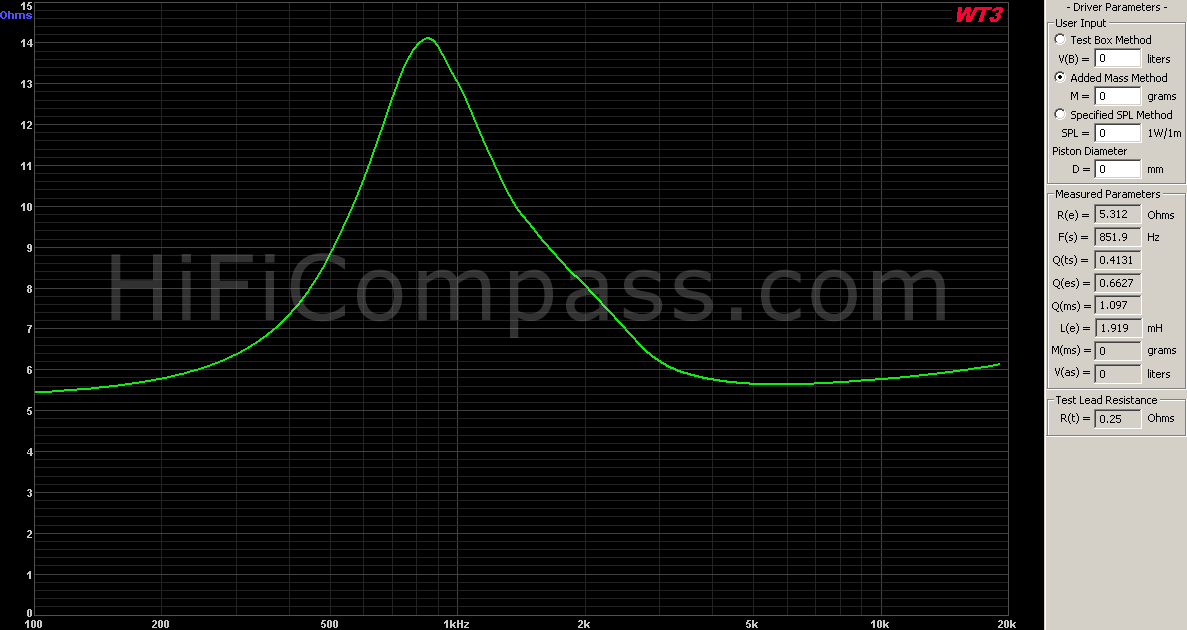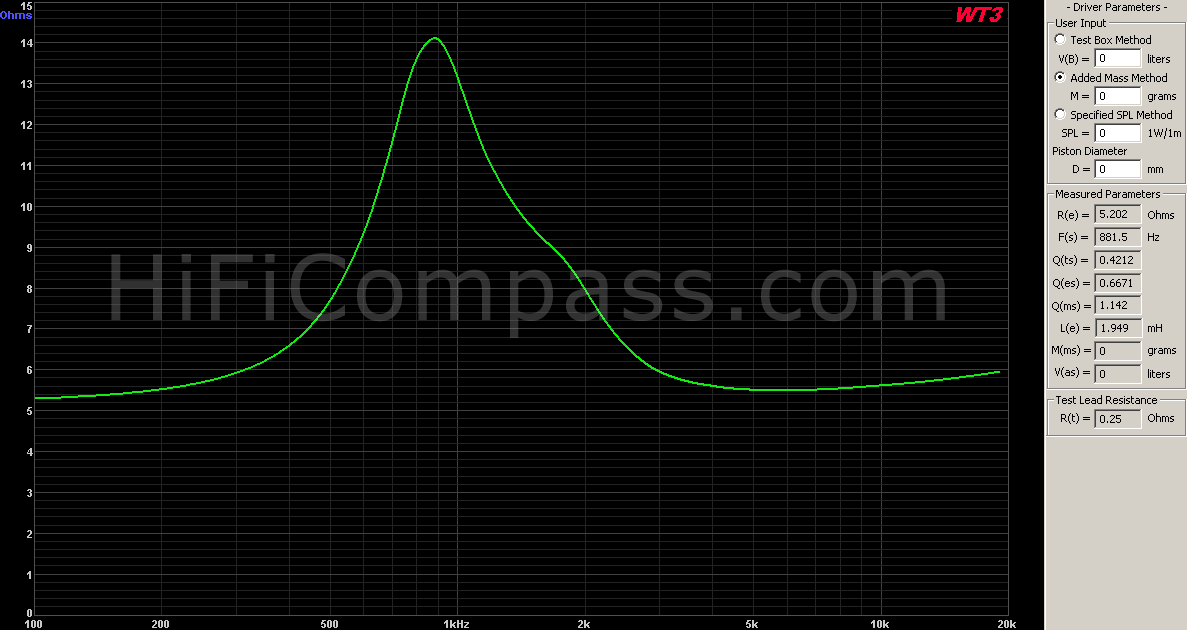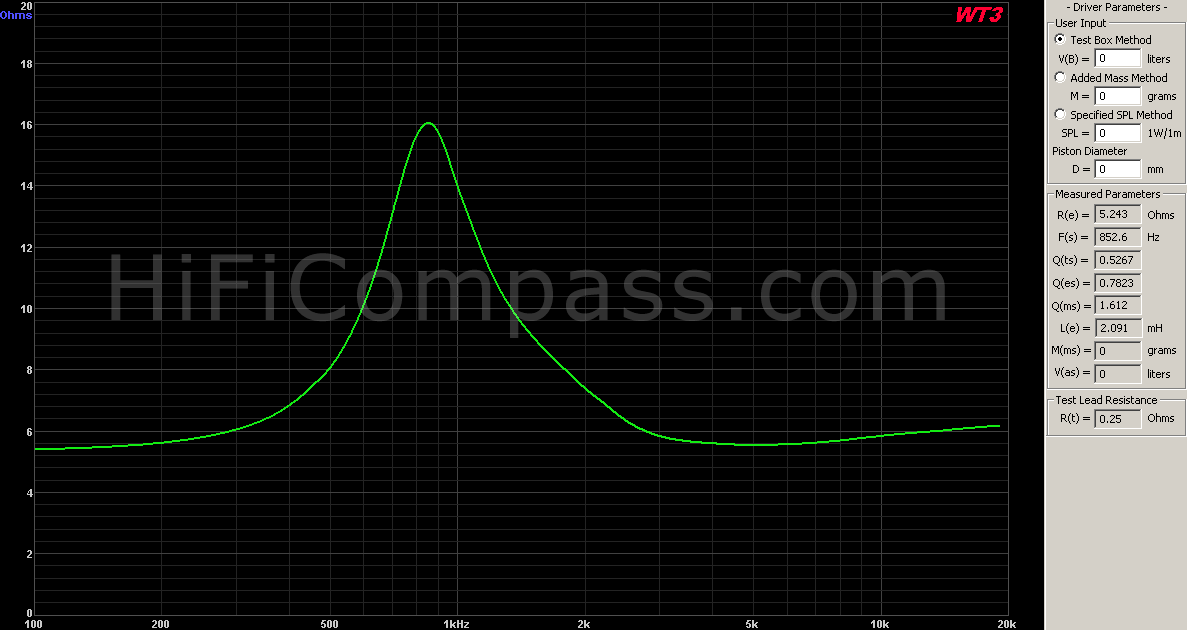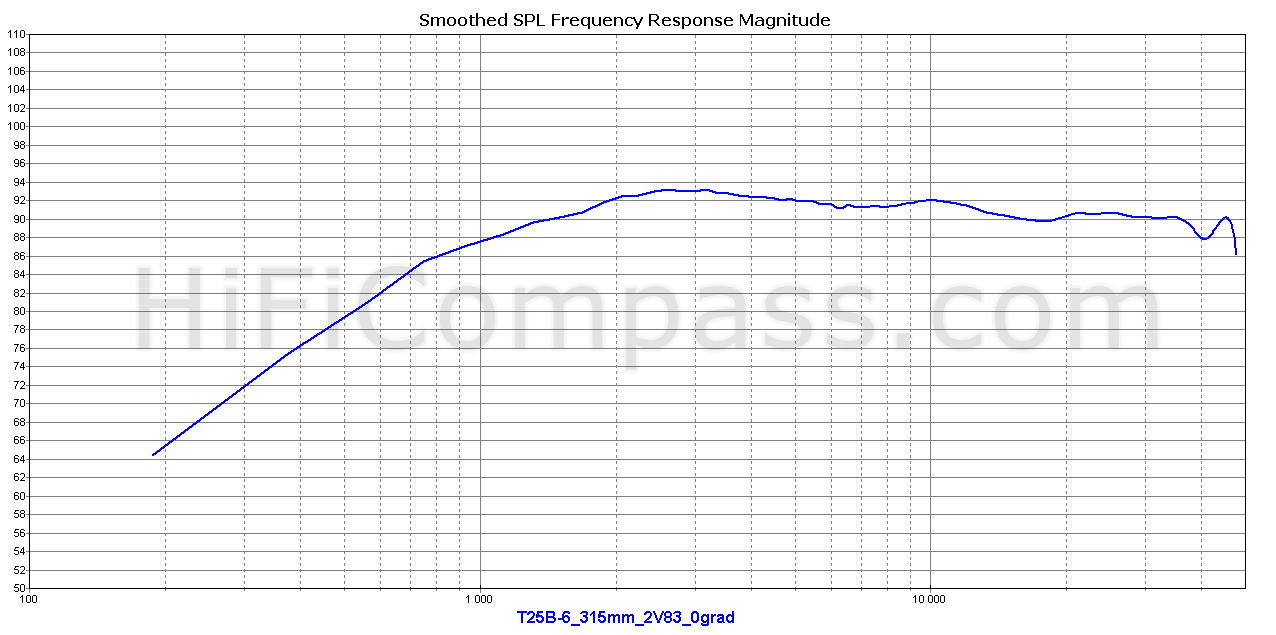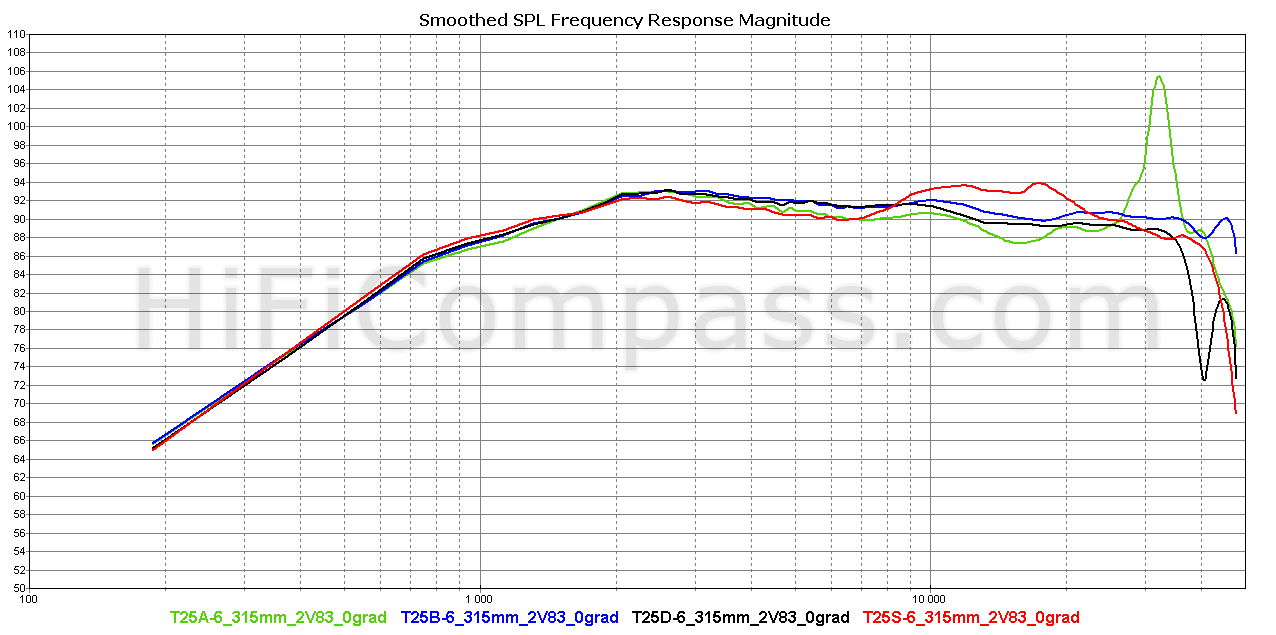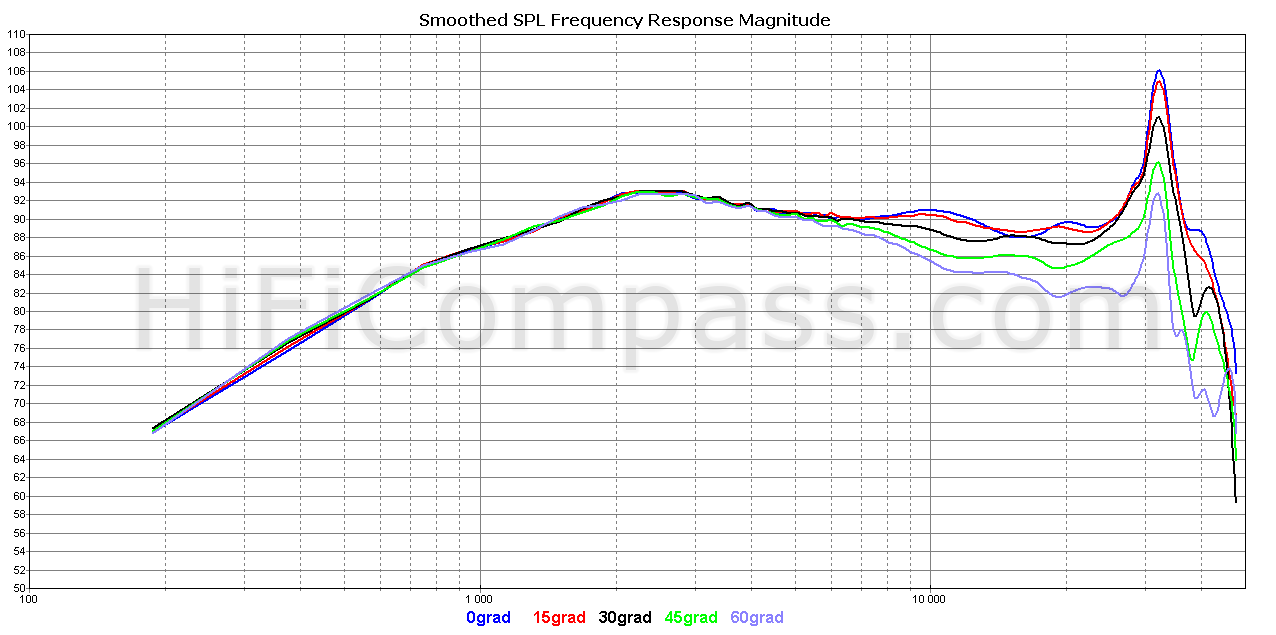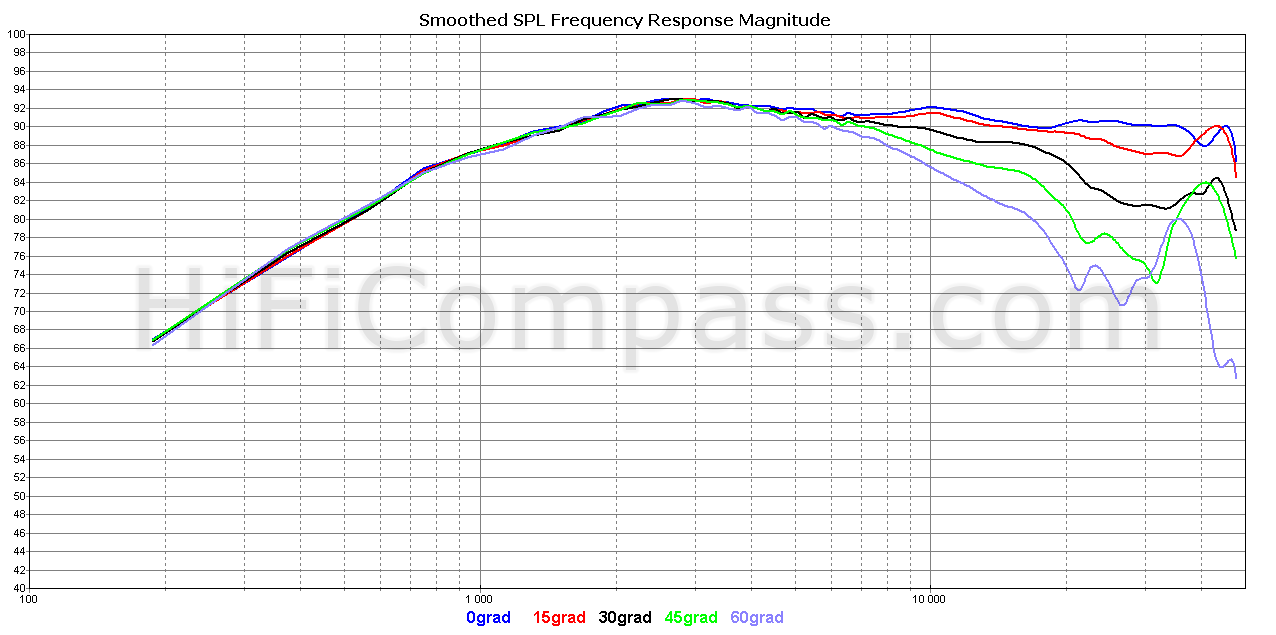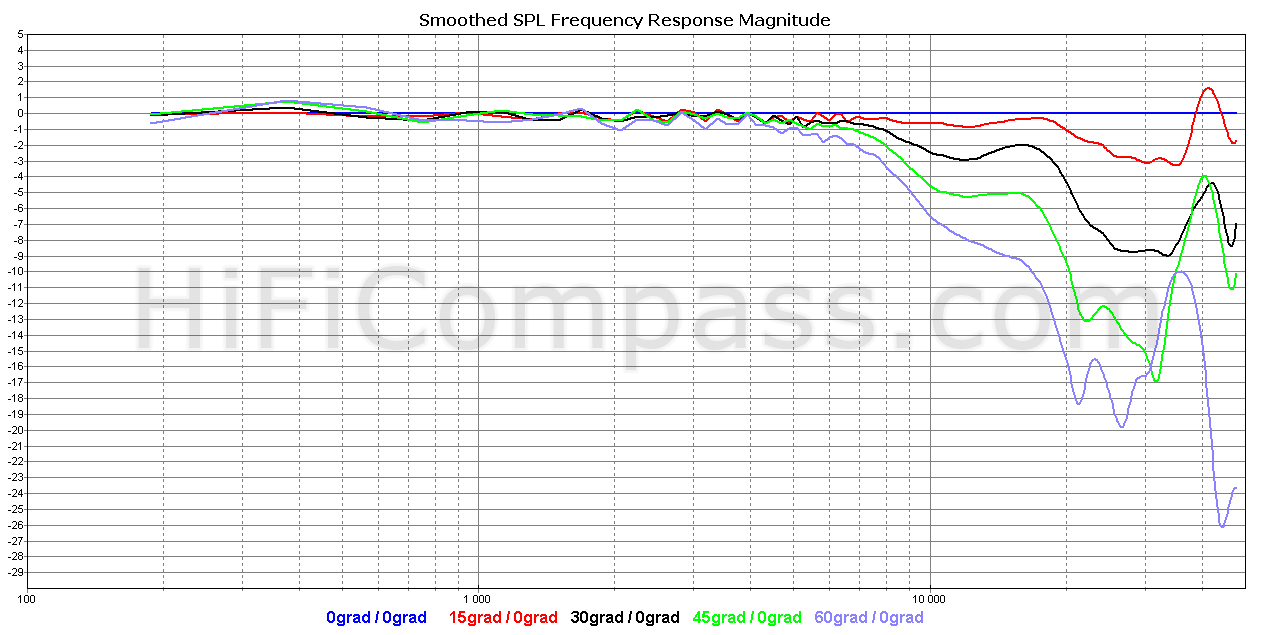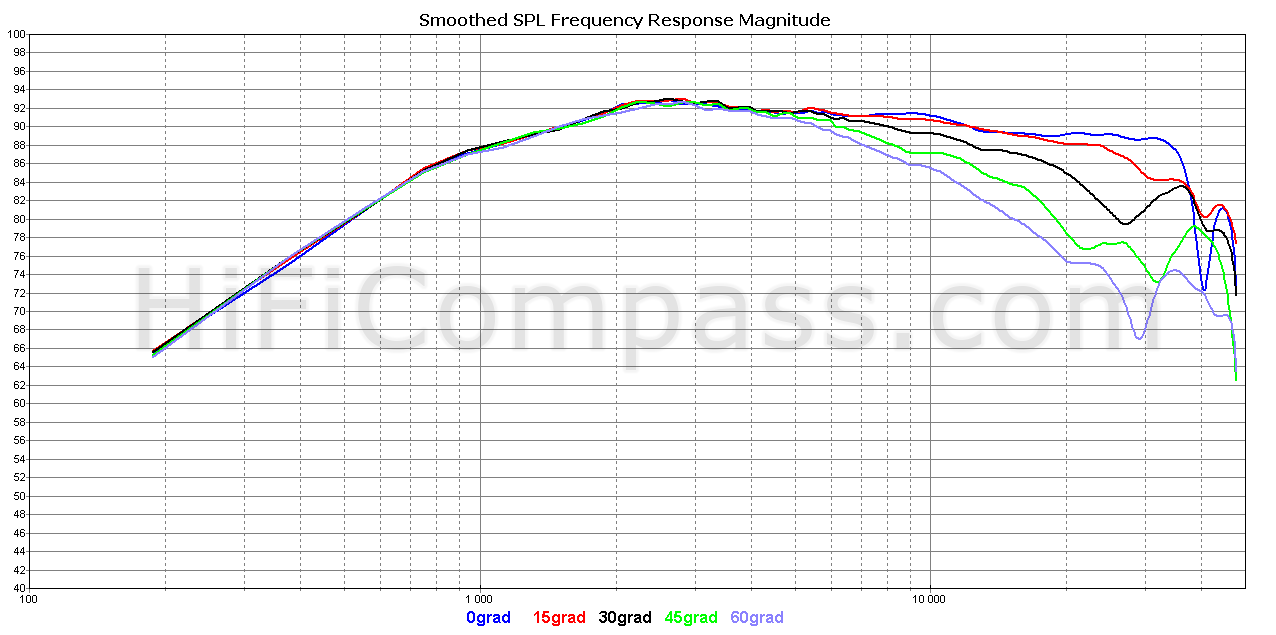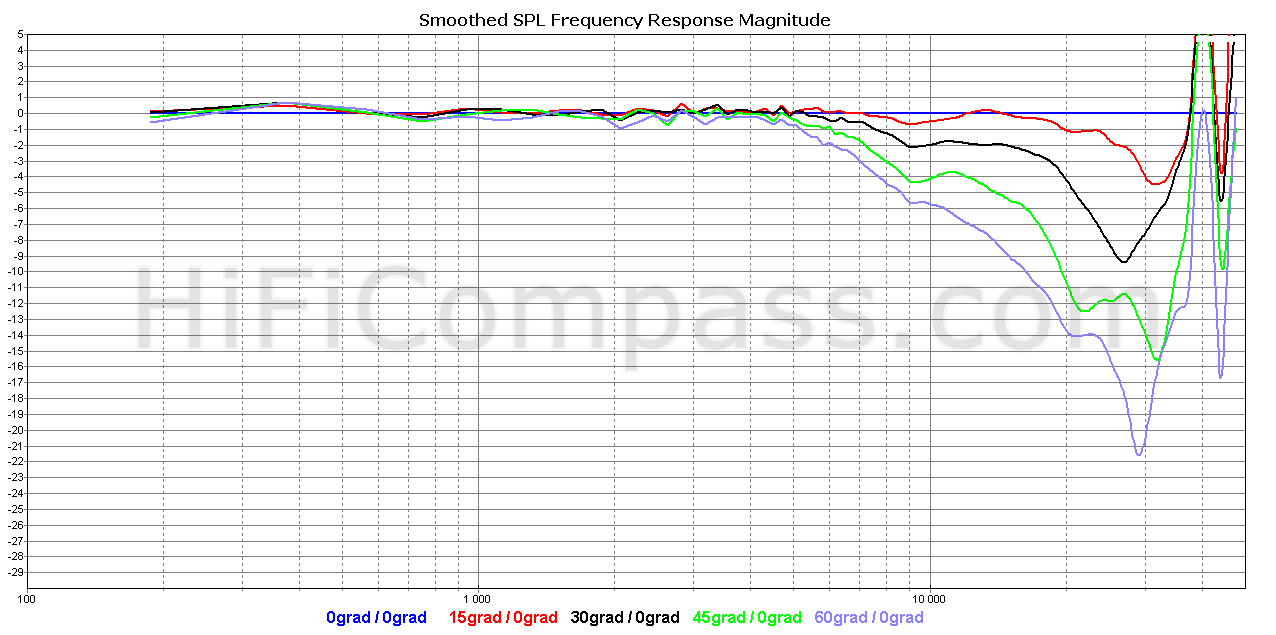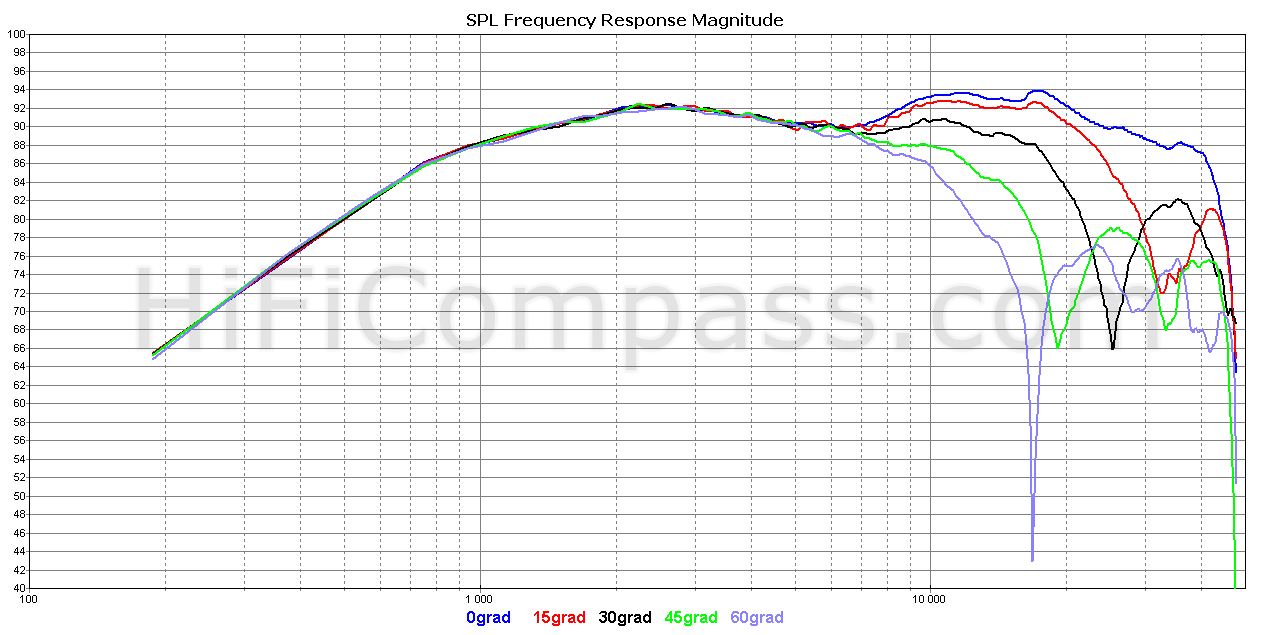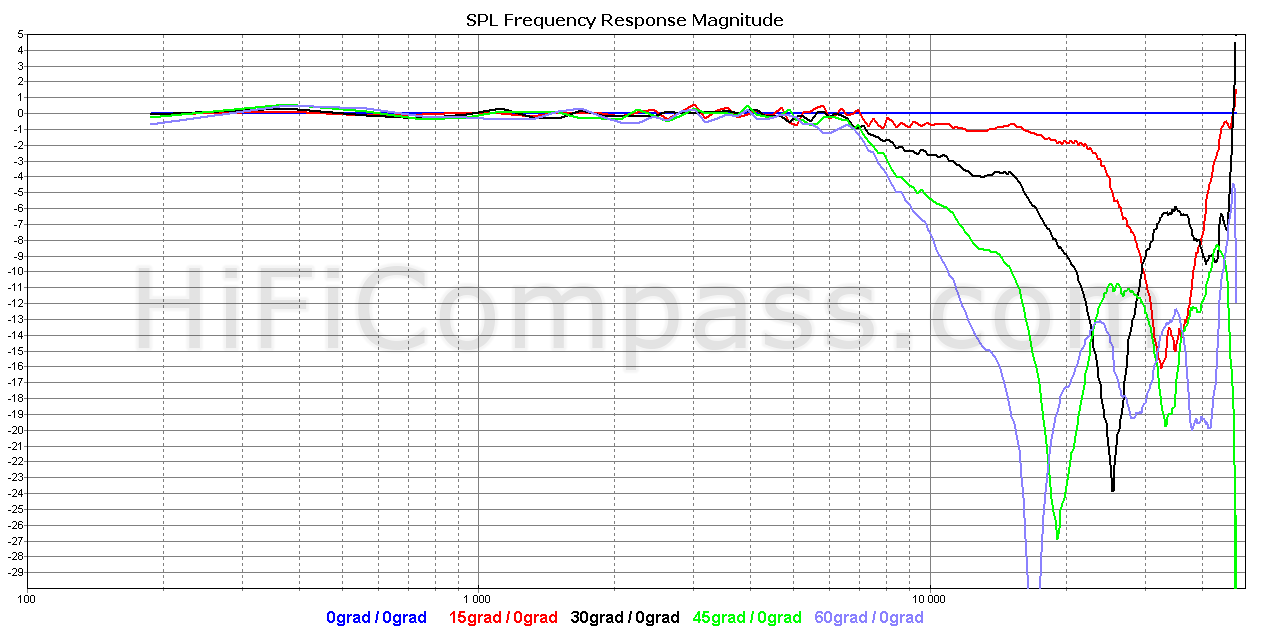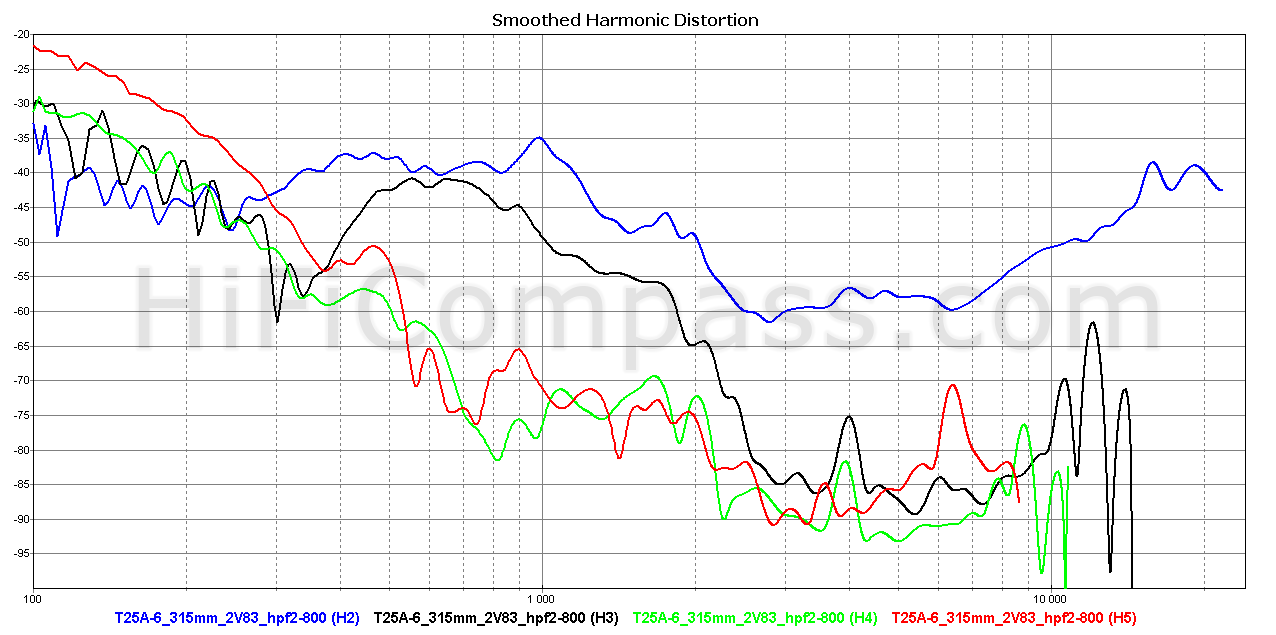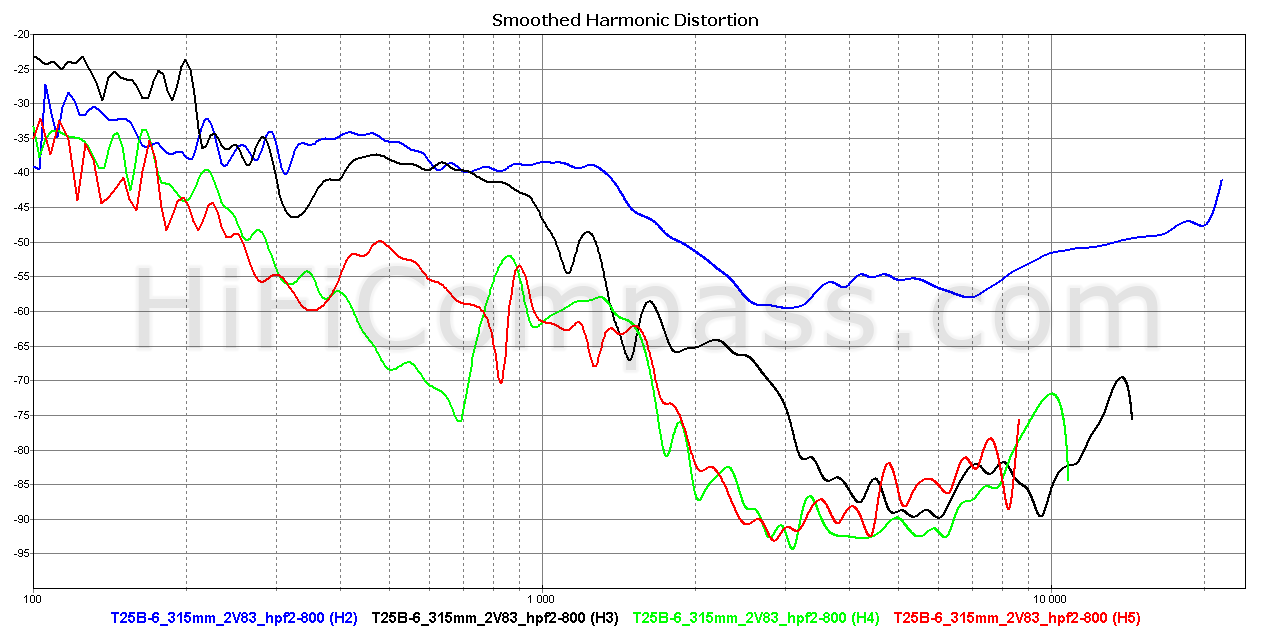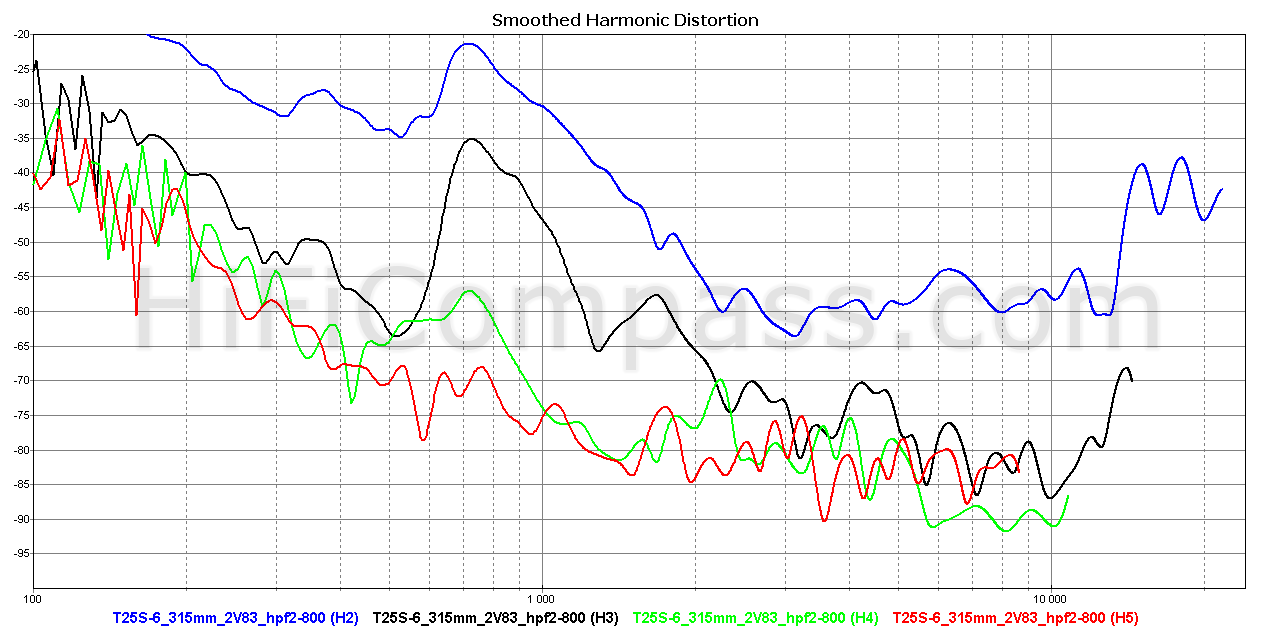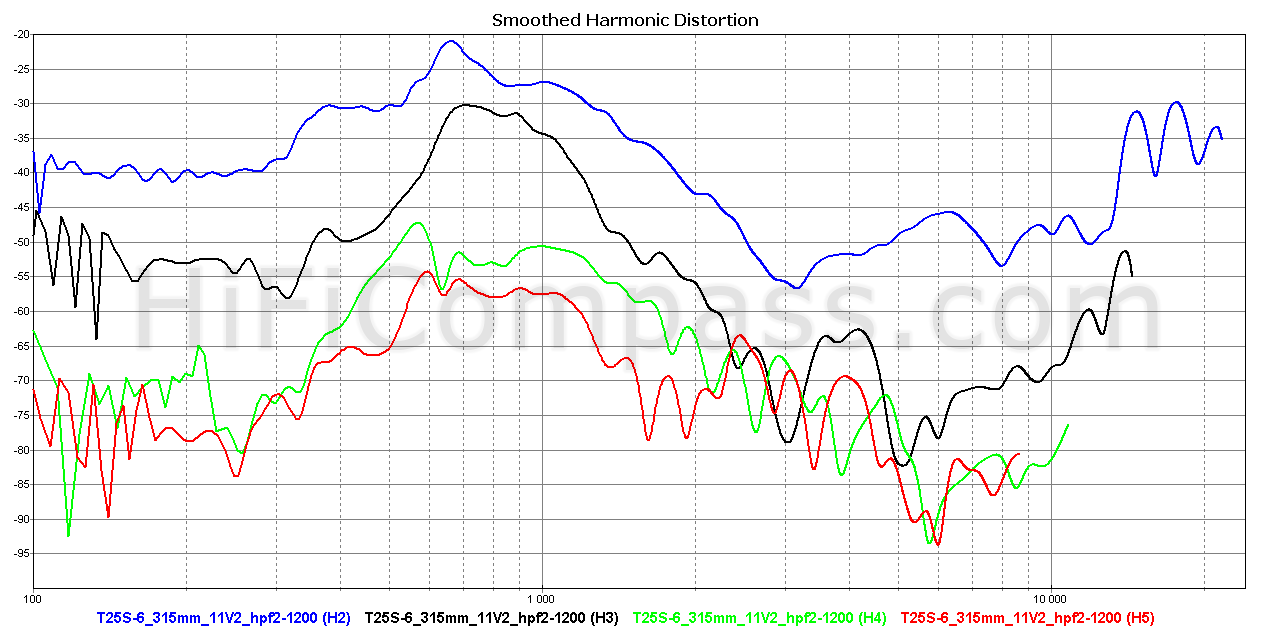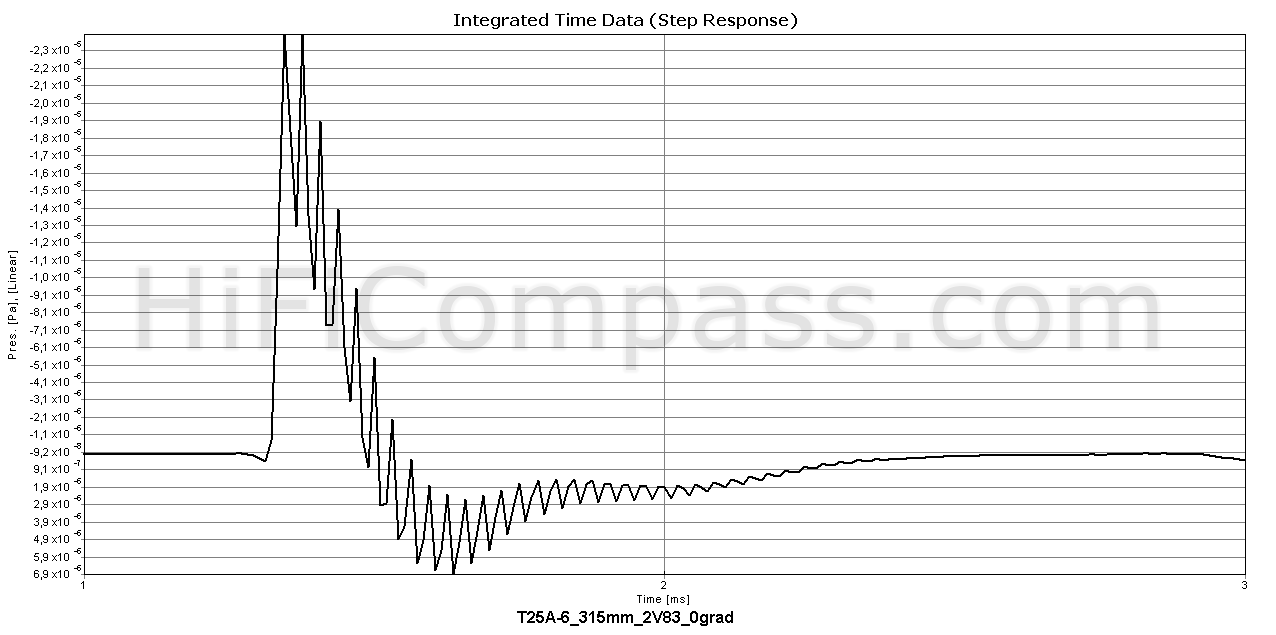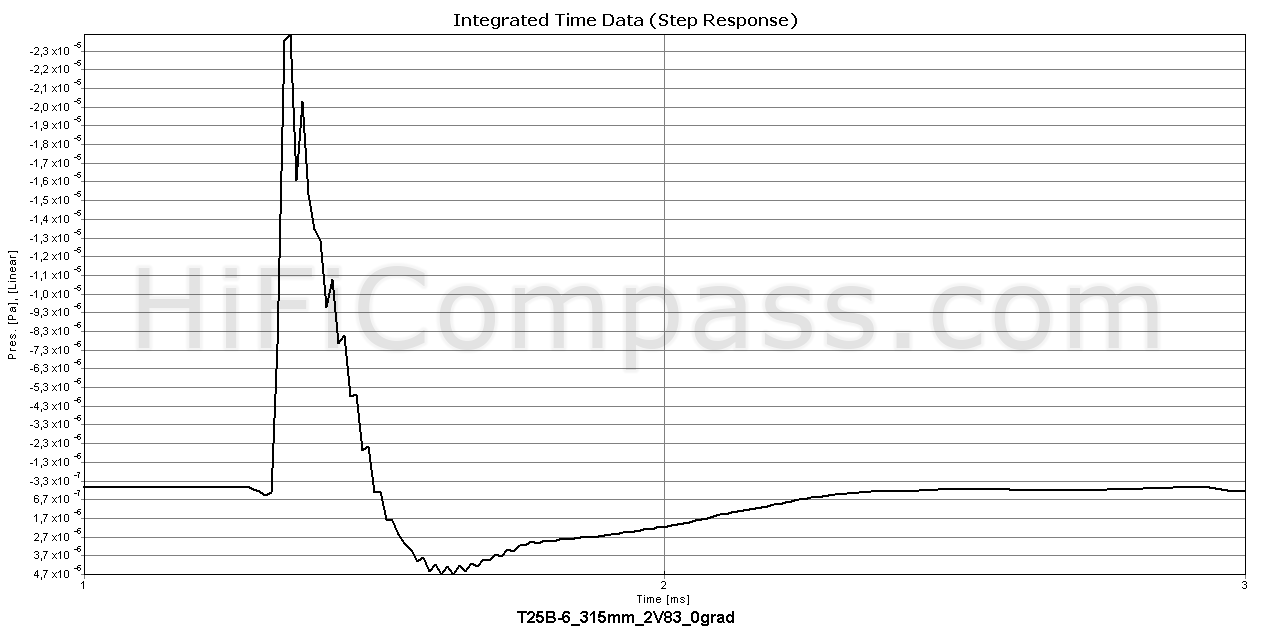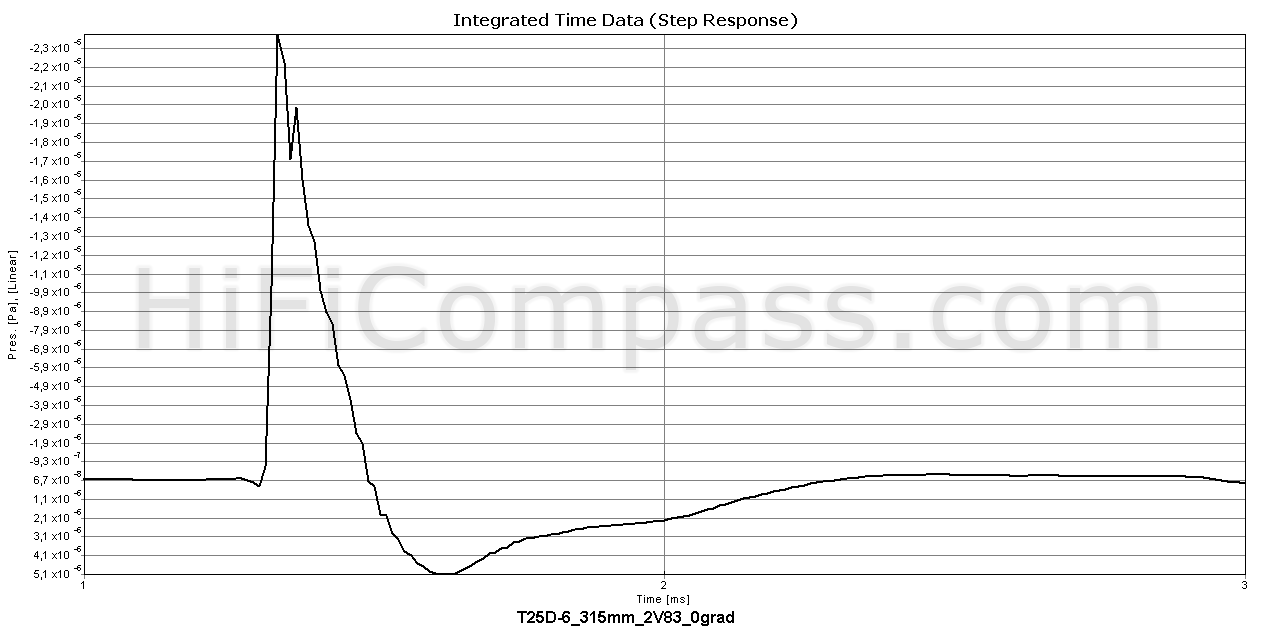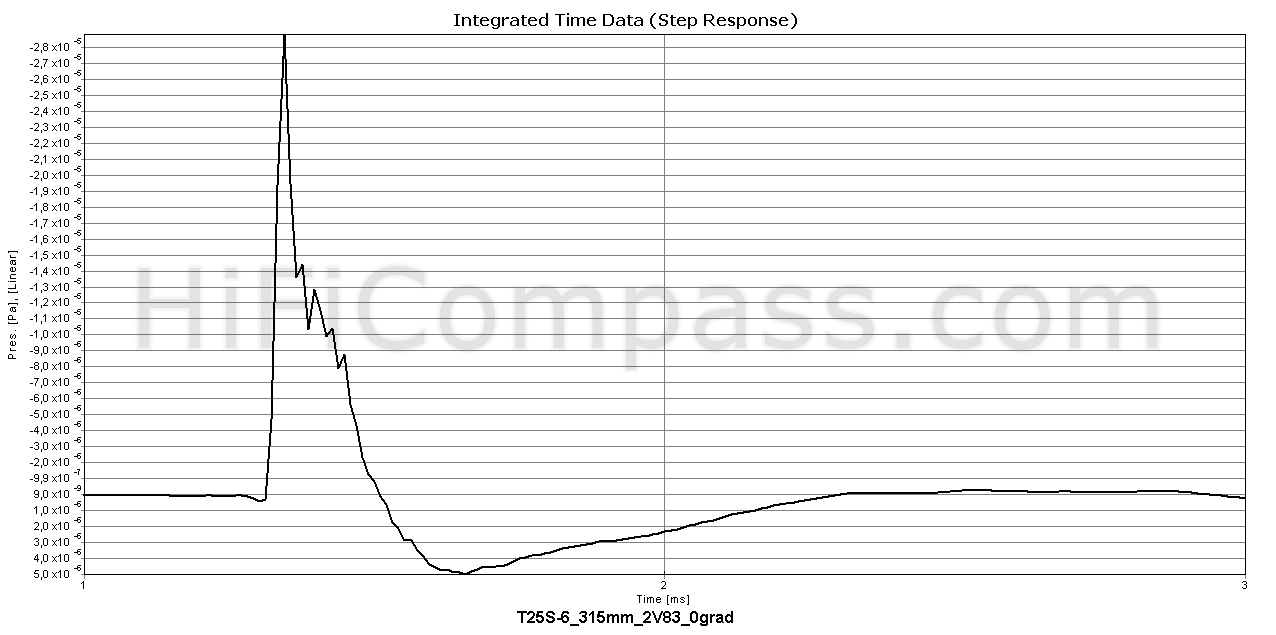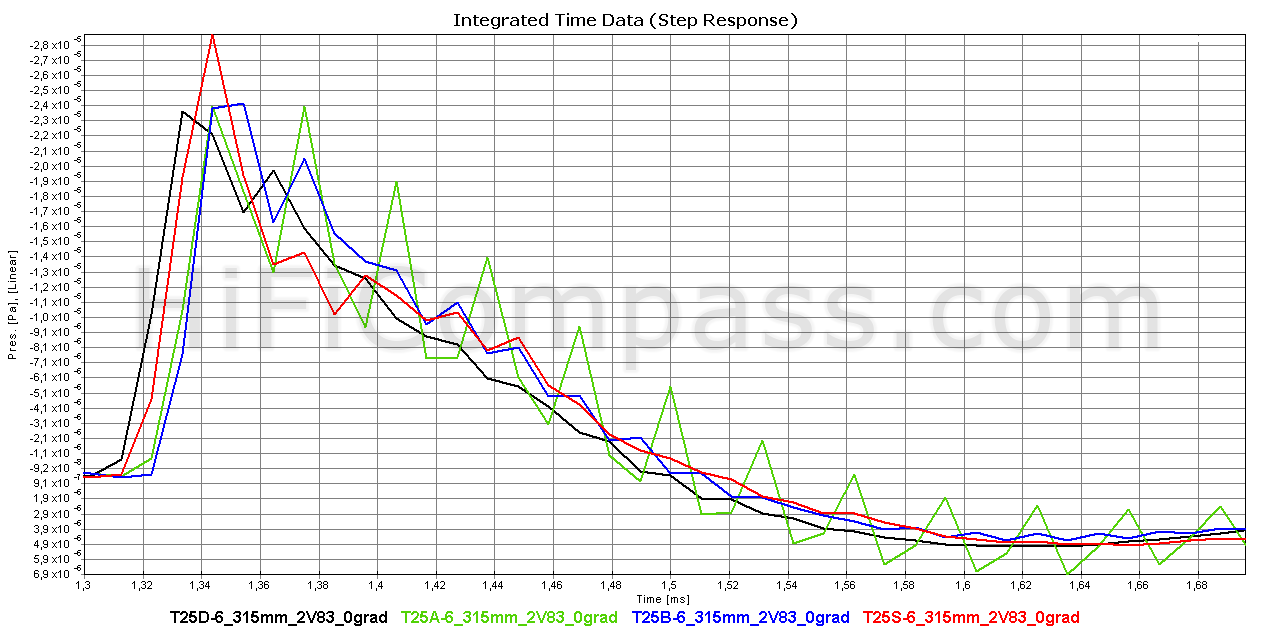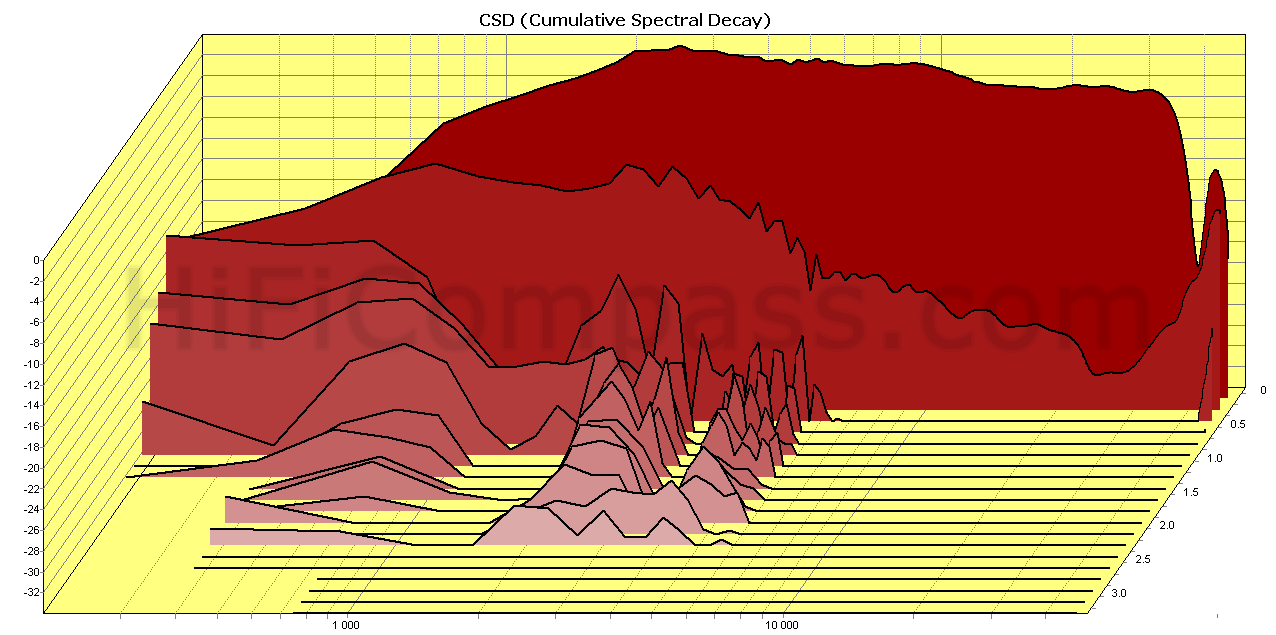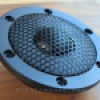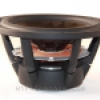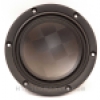HiFiCompass
BlieSMa T25A-6, T25B-6, T25D-6, T25S-6
What is on the test bench?
At the annual Munich HighEnd-2019 show the founder and designer of BlieSMa company Stanislav Malikov аnounced three new tweeter models - domed T25A-6, T25B-6 and T25D-6 which have 25-mm membranes of aluminium-magnesium, beryllium and CVD diamond respectively. At the end of 2019 this line was supplemented by the new soft dome model T25S-6. The model line extension is the evidence that young BlieSMa hasn't struck at "one tweeter company" status and continues its growing.
In order not to split the reviews I decided to make a group one, in which it will be easier to compare tweeters between themselves and focus on their distinguishing features.
The design of the new tweeters represents a scaled copy of their big brothers T34A-4 and T34B-4, which, with their huge sound pressure potential and extremely low distortion level, are quite expensive niche products and are optimal for use in large and expensive systems. In the most of home loudspeaker systems, many of their charms and features simply may not be used or realized. From this point of view the new line of more compact and cheaper tweeters is aimed on significantly wider application for indoor and car audio systems. Why to pay more?
For those who are not familiar with BlieSMa products I recommend reading my reviews of its first products - the tweeters T34A-4 and T34B-4.
Here you can get familiar with the BlieSMa history.
Why do we test this?
My interest to the new tweeters was warmed up by my impressions of the previous T34A-4 and T34B-4 models, which demonstrated incredibly high technical specifications that I had never encountered before, and my Pharaoh two-way speakers based on them, which surprised everyone, who heard them, with its realistic sound, the scale and holographic sound stage. I hope to be forgiven for a little self-promotion here![]() . Moreover, the new line expands the range of materials used for membranes - from classic fabric to exclusive and ultra-expensive diamond. It’s extremely interesting, having four pairs of almost identical tweeters, which differ each of other in membrane material only, to discover distinctive features both in objective measurements and in listening impressions. Will they be? Many people seriously believe that speaker driver's sound signature is mainly determined by its magnetic system and the membrane material is secondary. We'll see.
. Moreover, the new line expands the range of materials used for membranes - from classic fabric to exclusive and ultra-expensive diamond. It’s extremely interesting, having four pairs of almost identical tweeters, which differ each of other in membrane material only, to discover distinctive features both in objective measurements and in listening impressions. Will they be? Many people seriously believe that speaker driver's sound signature is mainly determined by its magnetic system and the membrane material is secondary. We'll see.
I would like to express my deep gratitude to Stanislav Malikov for the kindly provided pre-production tweeter samples for independent testing.
What did the manufacturer state?
The datasheets are quite detailed and contain all the parameters the loudspeaker designer needs.
As the review has comparative nature, at first I'll list the features that are common for all models:
- Extremely low moving mass for better transient response and higher efficiency - The moving mass of every tweeter model in fact has the lowest value among all the 25-mm dome tweeters presented on the market:
it is only 0.1 gram for a beryllium version
0.12 gram for a aluminium-magnesium one
0.15 gram for a diamond dome and 0.16 gram for a silk dome
- Fully saturated neodymium motor with copper sleeve for very low non linear distortion – Such a motor is not uncommon today and can be seen almost in every top level tweeter, but there is a small nuance - magnetic flux density in the pole piece gap is 2 T! It is a very high value, which approaches the limit of attainable.
- 2mm linear excursion and large vent channel for undistorted low-end frequency operation – 2 mm it is peak-to-peak value, so 1 mm for one way linear excursion - an another one record parameter. The closest competitor can brag only by 0.9 mm figure (Accuton C25-6-158).
- Narrow surround for less "soft dome" sound coloration – Of course, this feature doesn't apply to the silk dome version T25S-6
 .
.
- Flush mounted surround and rear mounted magnet system for flat frequency response and wide off-axis response – Moving assembly flush mounted on the face plate doesn't affected neither by any additional waveguide-horn loading nor by reflections/bouncing between the tweeter dome and mounting flange itself. In this case the dome is mounted on top of a flat flange and looks from the outside just like a protruding segment of a sphere. According to the manufacturer, it contributes to a more even frequency response.
- Rear mounted magnet system is very good. Removing screws heads from the front side of the flange reduces additional reflections and contributes to the smoother frequency response. We saw the same construction in expensive tweeters from Scan-Speak, SEAS, Accuton. - No ferrofluid for improoved dynamics
- Flexible and lightweight lead wires made in Denmark
- Thick aluminium powder coated flange
- Aluminium rear chamber with natural wool damping
- Gold plated wire terminals
Of numeric parameters it should be noted especially low inductance - 0.008 mH.
Now let's take a look at individual features:
T25A-6:
- 25mm aluminium-magnesium alloy dome with variable thickness for ultrasonic first breakup mode - The technology is the same as was used in the T34A-4 model. Making the dome thickness lower and lower from the circumference to the top and rearranging the moving mass by such a mean made it possible to achieve the break-up behavior of an aluminium-magnesium dome on the level of beryllium/ceramic domes.
- Recommended frequency range 2.2kHz - 35kHz
T25B-6:
- 25mm beryllium dome with ultrasonic first breakup mode
- Recommended frequency range 2.2kHz - 40kHz
T25D-6:
- 25mm CVD diamond dome with ultrasonic first breakup mode
- Recommended frequency range 2.2kHz - 40kHz
T25S-6:
- 25mm silk dome and silk surround, each made from its own fabric for better sound quality
- Protection grille available on demand
- Recommended frequency range 2.2kHz - 22kHz
From the data comparison it becomes clear how the different density of the membrane material leaves its imprint on the moving mass of the tweeter and, consequently, on the resonance frequency and sensitivity. The lighter the material, the higher the resonance frequency and sensitivity. Beryllium has the lowest density, around 1.845 g/cm3, so, the resonance frequency for it Fs=1050 Hz and sensitivity 92.5 dB/2.83V. A diamond dome is the heaviest of all the four tweeter models, the density around 3.5 g/cm3, so, its Fs=870 Hz and S=91dB/2.83V.
The relatively high resonance frequency of all T25(A,B,D,S)-6 tweeters asks for clarification. The fact is that in modern tweeters there is a tendency in decreasing of the resonance frequency down to values of 450-500 Hz. This became possible due to the use of very soft and wide surrounds in combination with a big moving mass - an average of 0.35 - 0.5 grams. Whether this is good or bad for the sound quality is a pretty moot point. From a conversation with Stanislav Malikov it became clear that one of his key points in the philosophy of achieving high-quality sound reproduction is the minimum possible moving mass and the narrow surround, that makes a minimal contribution to the tweeter sound signature. The narrow surround can't have such flexibility as wide one, and the moving mass of 0.1-0.15 grams also does not contribute to achieving a low resonant frequency. There you have a reason. The target frequency range for the use of tweeters starts from 2.2 kHz, therefore, I do not think that the resonance frequency of 1 kHz should confuse someone, especially taking into account the huge linear voice coil excursion.
Visual inspection
T25D-6
 |
 |
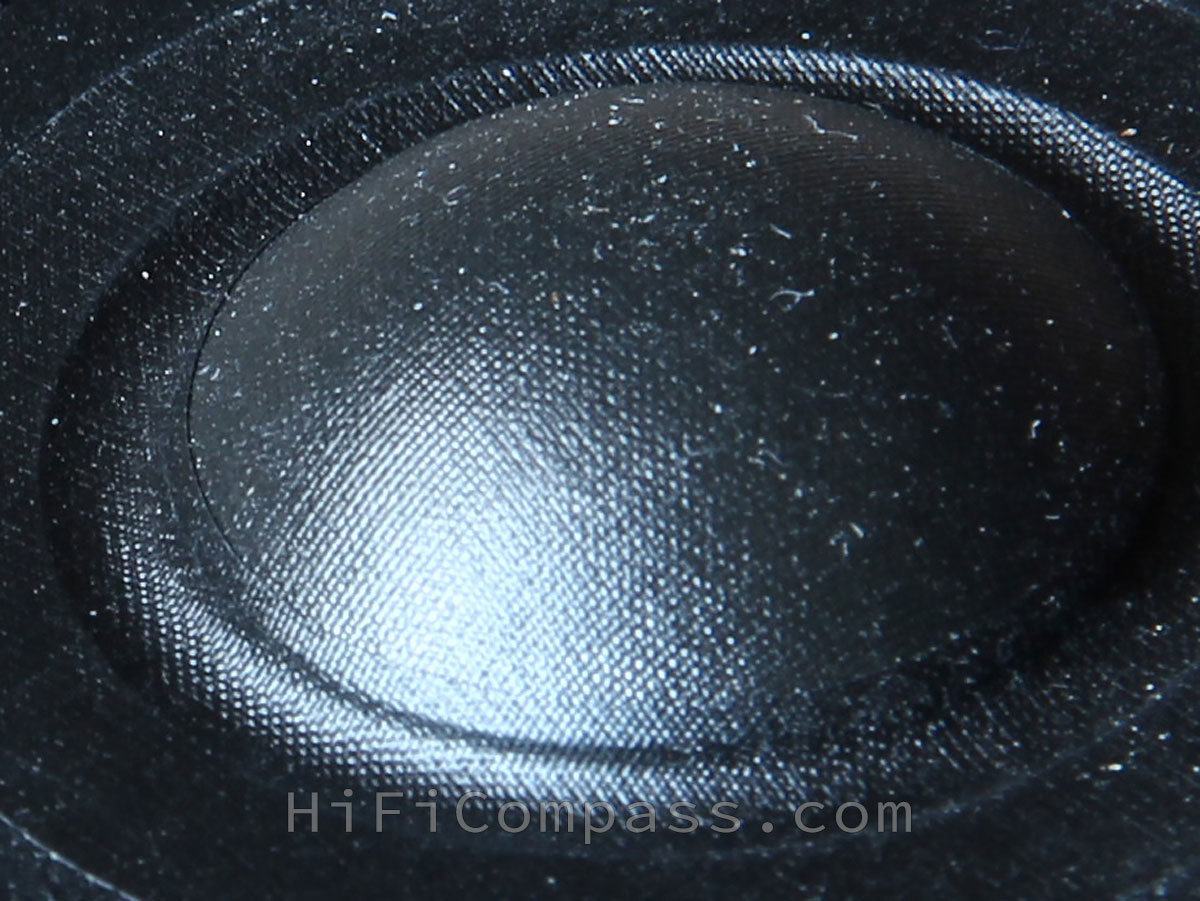 |
As in the previous models, we can see perfect manufacturing. Matted microtextured powder coating, ideally adjusted details, complete absence of any defects in the coating, absolutely no trace of glue. Indeed, a massive thick aluminum flange which will not be flawed even when the screws are heavy tightened. The terminals seem to be a single whole with the flange, they sit as if were pressed in and do not bend at all. The protective metal grid has high acoustic transparency, 70% approximately. The back chamber cover is absolutely dead silent when tapping on it. The silk dome tweeter hasn't protective grid, nevertheless, it can be supplied with it optionally. Due the hazard of permanent damage of hard and fragile membranes, the protective grid is an obligatory construction element for the rest three tweeter versions.
At the pictures you can detect, that the flange of diamond version has only three mounting holes, not the six as in others. Moreover, the back cover height of both diamond and silk models is less than that of aluminium-magnesium and beryllium ones have. Yes, this is true, because all the tweeters in the review are pre production samples and got to me in different time. It is clear, that manufacturer was improving the construction during the time of development. All the serial models will have only three mounting holes and low profile back chamber. And one more useful trifle, which is not on the picture, but which will definitely be in the production model, is a foam rubber gasket on the back of the flange..
If you look closely at the silk dome tweeter picture, you will notice, that the dome and surround are not formed from one piece of fabric, as it is usually made in most other fabric dome tweeters. This assembly is made of two different types of a silk fabric. According to information obtained directly from the manufacturer: "The dome is made of extremely lightweight true silk fabric with special damping and hardening impregnation, while another, softer fabric is used for the surround. Despite this design is more time-consuming in manufacture, more optimal parameters for both membrane and surround are obtained. It makes it possible to maintain a lowest achievable resonance frequency, while having a very low moving mass, as well as reduce non-linear distortions. What's more important, after many trials with various types of fabrics, we were able to find the best materials combination in terms of sound quality and that was our main goal" (Stanislav Malikov).
Summing up, we can say that we see a very compact, carefully thought out and high-quality realized construction.
Impedance frequency response
The impedance frequency responses above 3 kHz are just perfect. They are absolutely smooth with no any signs of any internal resonances. It is achieved through proper damping of the inner space and the moving system. There is a very, very smal rising in the impedance with increasing of frequency. This is the smallest rising among all the dome tweeters I have encountered by the moment and it became possible thanks to the ultra low voice coil inductance.
The measured resonance frequencies for all the models except the diamond one turned out to be lower than declared values in the datasheets:
For T25A-6 - 814 Hz versus declared 980 Hz
T25B-6: 852 Hz vs 1050 Hz
T25D-6: 881 Hz vs 870 Hz
T25S-6: 852 Hz vs 920 Hz.
All the impedance curves are like twin brothers except the right side falling part of the main resonance peak. An impedance behavior in that region depends on interaction of radiation of the back side of the dome with the pole piece vent and the back chamber, as well as the parameters of the internal damping material. It seems, there are some minor internal differences. It is hard to say whether they are only in prototypes or will be in the production models too.
The impedance frequency responses are a mirror of a very good magnet system. Excellent!
On-axis frequency response
T25A-6:
The measured averaged sensitivity in the 2 - 20 kHz frequency range was 90 dB /2.83 Volt, that is 1 dB less than the manufacturer stated (91 dB). The response has gentle falling towards to high frequencies, going from its maximum value 93 dB at 2.5 kHz to its minimum 87.5 dB at 15 kHz, so determining the total non-uniformity of 5.5 dB. The high "naked" figure in this case says nothing. More importantly, frequency response changes very smoothly and the overall unevenness is formed simply by the response's tilt, which is very easy to correct in a crossover.
The first and rather strong dome resonance appears at 32 kHz, however, the most of 25 mm aluminum membranes shows it already at 27 kHz. The thickness profiled membrane proved here its effeciency.
T25B-6:
The measured averaged sensitivity in the 2 - 20 kHz frequency range was 91.5 dB /2.83 Volt, that is 1 dB less than the manufacturer stated (92.5 dB). The response has gentle falling towards to high frequencies, going from its maximum value 93 dB at 2.5 kHz to its minimum 90 dB at 18 kHz, so determining the total non-uniformity of 3 dB. The high "naked" figure in this case says nothing. More importantly, frequency response changes very smoothly and the overall unevenness is formed simply by the response's tilt, which is very easy to correct in a crossover. It should be especially noted that the frequency response remains flat in the whole measurement system bandwidth, which is 48 kHz! Any signs of the dome resonances are completely absent. Overall, very extended and smooth response. Excellent!
T25D-6:
The measured averaged sensitivity in the 2 - 20 kHz frequency range was 91 dB /2.83 Volt, that matches with the declared value. The response has gentle falling towards to high frequencies, going from its maximum value 92.5 dB at 2.5 kHz to its minimum 89 dB at 18 kHz, so determining the total non-uniformity of 3.5 dB. The high "naked" figure in this case says nothing. More importantly, frequency response changes very smoothly and the overall unevenness is formed simply by the response's tilt, which is very easy to correct in a crossover. It should be noted that the frequency response remains flat up to 34 kHz Any signs of the dome resonances are completely absent. Overall, very extended and smooth response. Excellent!
T25S-6:
The measured averaged sensitivity in the 2 - 20 kHz frequency range was 91 dB /2.83 Volt, that matches with the declared value. The frequency response is saddle-shaped with gentle humps at about 2.5 kHz and 13 kHz and a sag down to 90 dB at 6.5 kHz. The total non-uniformity was around of 4 dB. The response extends very high in frequency and reaches as much as 40 kHz at 87 dB level. The principal difference between the frequency response behaviors of this fabric tweeter and its hard dome brothers is the smooth rising in the top octave and reaching 4 dB at its peak. This inevitable evil that soft domes have to pay is caused by the relatively low piston mode frequency, after which various parts of the dome are “disconnecting” from the driving voice coil and beginning to live their own lives. Here are two different approaches possible. The first is to make the membrane very soft to obtain a beautiful smooth frequency response without significant bumping in the upper octave and getting rich timbers in the "lower treble region", but at the same time loosing a bit of dynamic and quality of a percussion. The second is to choose the dome profile, material and the impregnation type to make the membrane more rigid. In this case the frequency response can be not perfect, but the liveness and realism of percussion instruments will be saved. The second approach had been adopted when designing the T25S-6. Please don’t forget, that the ultra-low voice coil inductance contributes nothing to additional high frequency roll-off, which happens to more inductive voice coils, when their impedance rises with frequency. Add this tweeter 12-30µH series inductor (to reach the common voice coil inductance value, as can be found in all good tweeters on the market today) and you will get an additional 1.13 - 2.82 Ohm at 15 kHz, which turns into a frequency response drop from 1.68 dB to 3.7 (!) dB. Such a bumping frequency response behavior can scare and push away an inexperienced loudspeaker designer, although personally I don't see anything wrong with that. It is easy to correct in the crossover network or by toe-in of loudspeakers.
On the group diagram you can see the behavior of the frequency response of the tweeters relative to each other. It is noteworthy that the frequency response of all tweeters has a slight "swelling" at 10 kHz. I wondered what could be the cause of it. It’s definitely not a membrane, since it is different for each tweeter. Is it the motor? It seems that it isn't, because at the impedance response everything is fine. One suspicious element, which is common to all the models, is the protective grid. I took it off the beryllium tweeter (I choosed a beryllium tweeter because it was necessary due to its use in the waveguide design in one of my projects) and measured the frequency response. And it turned out that just the protective grid and the associated interference effects were the cause of the additional frequency response unevenness. The results are shown in the diagram below. The red curve is with the grid, the black one is without.
So, there is a field for perfectionists to upgrade, but at your own risk.
Stanislav Malikow answered to my question about the reason that the measured sensitivity of the Alu-Mg and Be tweeters differs from the datasheet's values. He said that such a discrepancy is quite possible in pre production samples, but in serial products there will not be such a difference.
Off-axis frequency responses
The above diagrams show off-axis frequency responses. A pair of diagrams for each tweeter model, regular response and normalized, on which the axial frequency response is taken as the reference, and the off-axis ones only reflect the difference with it. All curves are very smooth and monotonically falling with an angle and frequency. There are no signs of hidden resonances and diffraction artifacts.
The aluminum version has the widest dispersion - the frequency response falling at 20 kHz and 60 degrees does not exceed 8 dB, this is an indicator of a very good horizontal dispersion. The narrowest dispersion has the silk version. There is approximate parity between beryllium and diamond version.
The measured off-axis responses are very close to the declared ones by the manufacturer.
Harmonic distortion (315 mm)
The frequency responses of nonlinear distortion for each tweeter model are given above at average sound pressure levels of 91 and 103 dB (at voltages of 2.83 and 11.2 volts, respectively). In these diagrams we analyze the frequency range from 2 kHz and higher - the potential working range of the tweeter. I think you can analyze these charts yourself.
It is easy to see that the nonlinear distortionsare extremely low and their behavior is almost the same for ALL tweeter versions. This indicates that the main source of distortion is the magnetic system, which demonstrates a very high technical level here.
The second harmonic clearly dominates over the rest ones, but its level is staying very low when compared with the vast majority of tweeters on the market even at the sound pressure levels of 103 dB. Higher harmonics are on average 10 times or more lower the second one.
All the tweeters can easily operate at frequencies down to 2 kHz. An increase in distortion with a decrease in frequency begins with about 3-4 kHz, depending on the SPL and mainly due to the nonlinearity of the narrow surround.
If we consider the range above 3 kHz, then the diamond version looks the best. Even at a high level of sound pressure it keeps a very low level of higher harmonics. On this basis, the silk version begins to give up a little, but in general it still retains a very low level of distortion. Excellent!
Step response
Transient response shows excellent slew rate and fast calming. Due to the relatively high value of the main resonance frequency the complete calming of the tweeter occurs rather quickly, though not aperiodically, but once crossing the zero line - a consequence of the increased quality factor of the main resonance. When used in real systems with a cutoff frequency of 2 kHz you can ignore this. Very good.
Diamond has the best transitional response, followed by beryllium. The worst of aluminum, on which a long toothed tail "sits" as an echo from the membrane ultrasonic resonance.
Waterfall
The waterfall shows the same effects as the transient response, in addition exposing hidden resonances that are difficult to see in other types of measurements. All versions of the tweeter, with the exception of aluminum, show an excellent waterfall, which has nothing behind the second cut above 2 kHz. A little below 1 kHz there is a small tail from the main resonance of the tweeter. Excellent!
The waterfall of the aluminum version is the worst among other T25-6 models.
The 2 - 5 kHz ridges does not belongs to the tweeters, but are the artifacts of the measurement setup itself. They appears in the most of my measurements.
So, we got to a very interesting point. You can doing measurements and discussing them for a very long time, but no one really knows how they are related to our subjective feelings in general. Undoubtedly, there is some kind of correlation - a flat frequency response indicates the absence of obvious humps and dips, which lead to an ear drilling or the bleaching of the music instruments and distortion of the timbre. Low non-linear distortions can increase the resolution of the system, reduce the amount of "mud", especially at high volume levels. The radiation pattern may give us a hint about spatial characteristics of the being shaped virtual sound picture. In fact, that’s all. Not very much at all.
There are many more nuances that can not be measured, but leave a noticeable imprint on the sound signature of the speaker. Many people claim that the main factor affecting the sound signature of a speaker is a quality of its magnetic system and the membrane material is secondary. My point of view on this question is the following: the magnetic system is undoubtedly very important, a lot depends on it, especially the overload capacity of the speaker, but the membrane material properties are the main factors determining the speaker's “breed”, character or sound signature. Namely it is the combination of its unique characteristics - the Young modulus, density and internal damping and, possibly, something else that determines the unique sound signature that we hear as its own “voice”. Believe me, each material sounds differently.
So, Aluminium-Magnesium T25A-6:
Beryllium T25B-6:
Oh, this beryllium, why is there so many crazy about it now? To don't repeat myself, then to all the POSITIVE attributes inherent in the aluminium version, you need to add a noticeable improvement in resolution, better micro details reproduction, more timbre tones = more colors. Beryllium has a bit softer percussion presentation, not so bright as aluminium does. In the sound image appear layers with better splitting of micro texture. Thanks to this "layering" musical instruments are better separated in space.In both aluminum and beryllium versions, it is necessary to very carefully handle the formation of the frequency response in a certain range, otherwise there may appear problems with a sharp transmission of sibilant sounds.
His Grace Diamond - T25D-6:
The Diamond version has even higher resolution than beryllium, more air and space is heard in the recording and it is transmitted in such a natural way! A richer and more natural timbre of the sound of all musical instruments, percussion sounds more delicately too. It is difficult to put into words, but the sounds are simply better separated from each other in space and it is very easy to hear. The sound is extremely delicate and relaxing. There is no any hint of brightness or a tendency to harsh sibilant sounds reproduction.
A very experienced friend of mine said that a diamond tweeter sounds like it’s not there at all. And I think this definition is absolutely accurate. For my taste, definitely the BEST sounding tweeter from BlieSMa!
Everybody's beloved silk - T25S-6:
Judging even from the poll on my website, the vast majority of people prefer silk tweeters to everyone else, although the result may not be entirely correct, since many never had the opportunity to hear beryllium and even less so diamond. Nevertheless, silk has something to love and these charms are reflected in the T25S-6 too. Extremely rich palette of colors, natural timbre of instruments, slightly softened and unfatiguing sound. A bit softer percussion presentation. Every musical instruments has its own body and dimensions in space and is perfectly visualized. The tweeter rewards the listener with an infinite number of micro-details, nuances, touches and an excellent sound atmosphere. Of the shortcomings - he lacks the natural rigidity and realism of percussion, that for many is very important. This is the Achilles' heel of ANY silk tweeter. But, by the way, the T25S-6 tweeter has the balls of steel! Due to the special dome's profile and height (closer to the hemisphere, like Morel tweeters have) and its special impregnation, T25S-6 tweeter’s dome is more rigid than can be found in many other silk tweeters, which did not allows it completely to lose the “drive” at high frequencies
"How to use" recomendations
Due to the very low distortion and reliable operation at the lower edge of the frequency range, all models of the T25-6 tweeter can be used down to a frequency of 2 kHz in loudspeakers with two and more frequency bands. Their compact size allows them to be used in automotive systems of the highest level.
An inverted (concave) surround opens up excellent opportunities for using the tweeters in a short waveguide in order to increase the overload capacity at the bottom of the operating frequency range, align the acoustic centers of adjacent bands and control the radiation pattern.
What is the price and where to purchase it?
At the time of the review the tweeters were not yet on sale, but in private conversation the manufacturer had previously announced the expected retail prices:
- T25A-6 - €130/pc, VAT is not included
- T25B-6 - €250/pc, VAT is not included
- T25D-6 - €1680/pc, VAT is not included
- T25S-6 - €130/pc, VAT is not included
The expected date of the sale of tweeters is May 2020.
Summary
The testing confirmed good agreement between the measured technical parameters and the declared ones by the manufacturer, with the exception of sensitivity. It was for aluminum and beryllium versions below the datasheet's value by the 1 dB.
So, it can be noted:
- average sensitivity - from 90 to 92 dB/2.83 Volt at 1m
- very extended and smooth frequency response
- very low nonlinear distortion
- excellent production quality
- possibility of use down to 2 kHz
- very wide sound dispersion
- compact size
I can say with confidence that all BlieSMa T25-6 tweeters are currently among the best 25 mm dome tweeters in the world.
Yevgeniy Kozhushko/21.04.2020
CONTACTS
- Ukraine
- (+380) 95 904 7827
- hificompass@gmail.com
LAST NEWS
-
27 Mar 2025
-
04 Mar 2025
-
25 Feb 2025
-
10 Feb 2025
